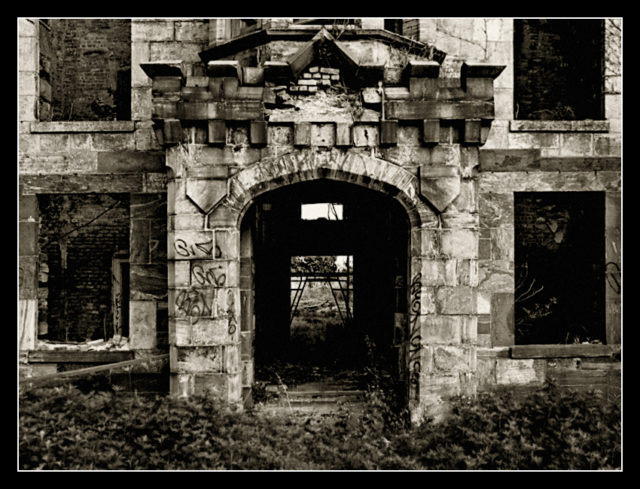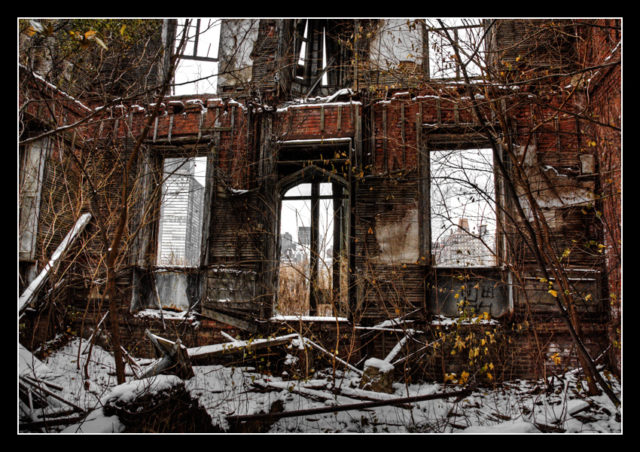For more than 3,000 years, smallpox ravaged nearly every part of the world. Before the breakthrough smallpox vaccine was discovered in 1796, 400,000 people died annually from smallpox in Europe alone. It wasn’t until the 1970s that the World Health Organization declared smallpox had been eradicated, but the legacy of the deadly disease remains in the ruins of New York’s Roosevelt Island.
Smallpox: the deadliest killer in history
Smallpox has had a major impact on world history. It never discriminated when it came to victims, killing many kings and queens throughout history. Louis XV of France and Queen Mary II of England both succumbed to the disease, while Queen Elizabeth I spent the rest of her life covering pockmarks with heavy makeup after surviving smallpox as a child.

The virus has also decimated Indigenous populations around the world. Smallpox was first brought to the Americas in the early 1500s. In 1520, a massive outbreak killed millions of native inhabitants of Mexico.

By 1617, 90 percent of Indigenous peoples in the Massachusetts Bay area died of smallpox while countless other Indigenous peoples were infected by smallpox-laced blankets as one of the earliest forms of biological warfare.
Roosevelt Island Smallpox Hospital
The Smallpox Hospital on New York’s Roosevelt Island (formerly known as Blackwell’s Island and Welfare Island) was built in 1854 to serve inhabitants of New York City who still struggled with smallpox outbreaks despite the vaccine. Designed by the famous architect James Renwick, known for designing iconic New York landmarks like Grace Church on Broadway and St. Patrick’s Cathedral on Madison Avenue, the hospital was built in the gothic revival style. The pointed windows on the third floor and the castle-like features of the building make the Smallpox Hospital a truly spooky destination.

With a large number of immigrants arriving in New York through Ellis Island, a hospital that could quarantine infected patients was desperately needed. Before the smallpox hospital, patients were housed at a “pile of poor wooden out-houses on the banks of the river.” As late as 1871, nearly 100 years after the development of the smallpox vaccine, New York continued to suffer from smallpox epidemics. Between 1856 and 1875, the hospital treated 7,000 patients a year.

The Roosevelt Island Smallpox Hospital housed 100 “charity cases” that were treated for free, as well as more elaborate rooms on the upper floors for paying patients. In 1875, the building was transformed into the Home for the Nurses and the Maternity and Charity Hospital Training School while the Smallpox Hospital moved to the Riverside Hospital on North Brothers Island.

The Renwick Ruin
As a medical training school, the Smallpox Hospital continued to treat patients to help teach nurses. In the 1950s, the hospital was rendered obsolete and the medical training school was closed, leaving this beautiful historic building vacant and in shambles. The “Renwick Ruin,” as its affectionately called, is a hauntingly beautiful gothic building that could easily be mistaken for the surreal-looking European ruins like Tintern Abbey, which inspired Romantic poet William Wordsworth.

In 1972, the abandoned smallpox hospital was added to the National Register of Historic Places, making it New York City’s “only landmarked ruin.” Three years later, the Landmarks Preservation Commission reinforced the walls of the crumbling building to prevent it from completely falling apart, but the historic hospital remains unsafe to enter.

The only truly original parts of the building, some outer walls and foundation, remain guarded by a fence at the south end of Roosevelt Island. Today, an organization called “Friends of the Ruin” has proposed a massive restoration project which would transform the old hospital building into a memorial for frontline medical workers.

More from us: The Ghosts of Ellis Island Immigrant Hospital
Highlighting the building’s beautiful architecture, the restoration would enforce the weakened walls and create gardens and walkways throughout Roosevelt Island and the inside of the ruins – maintaining the abandoned feel while protecting it for generations to come. The Friends of the Ruin continue to accept donations to help make the memorial a reality.
